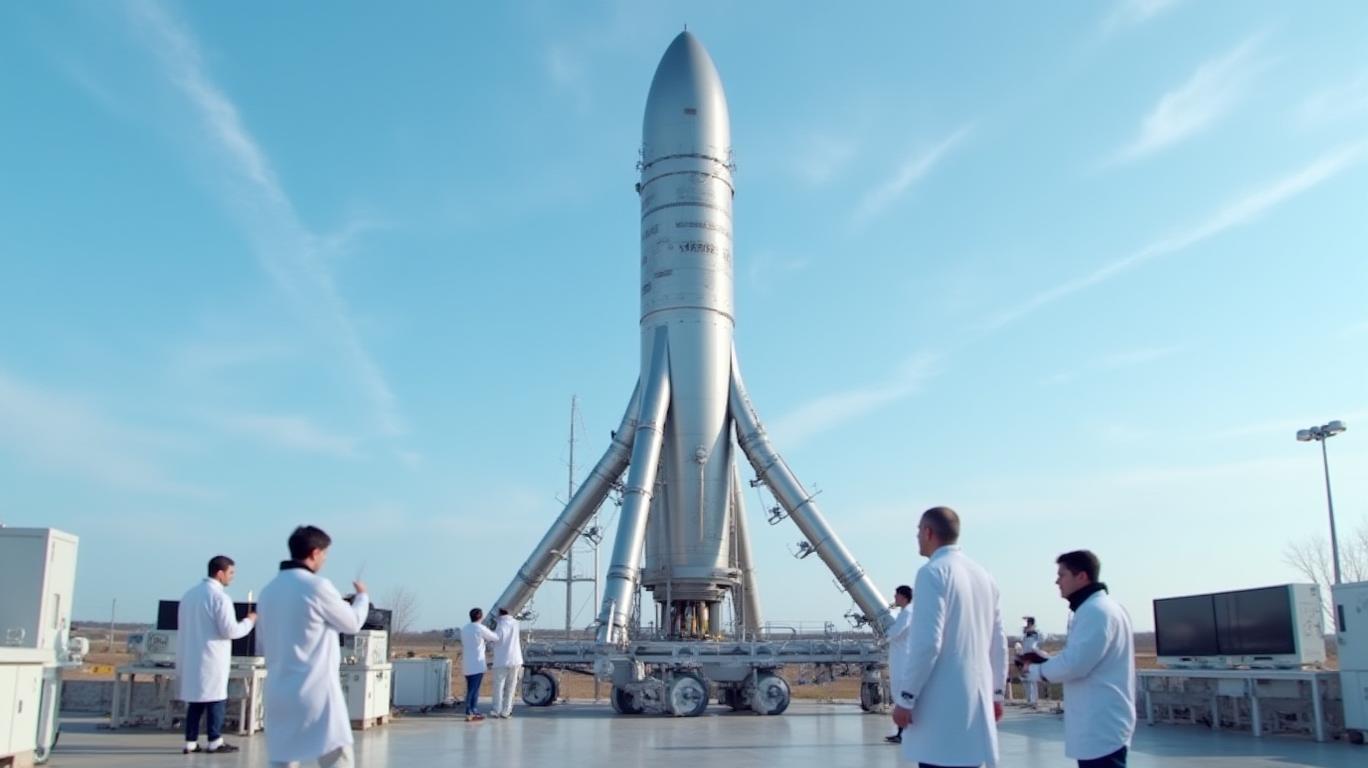ISC's Rocket Ambition: A Launchpad to Dominating the Small Satellite Market
The global space economy is projected to expand to $55.4 billion by 2030, driven by the proliferation of small satellites for Earth observation, IoT, and communications. At the heart of this revolution is ISC, a Tokyo-based startup racing to redefine affordability and accessibility with its reusable rocket technology. Backed by a
U.S.-Japan partnership and a December 2025 test launch that could redefine its valuation, ISC is positioned to capitalize on a market hungry for cost-effective solutions. Here's why investors should take note—and act now.The Partnership That Broke Barriers
ISC's collaboration with U.S. propulsion giant Ursa Major Technologies marks a historic milestone in trans-Pacific space cooperation. Under a Technical Assistance Agreement (TAA) approved by the U.S. Department of State in January 2025, ISC gained access to Ursa Major's advanced Hadley small launch engines and the rights to co-develop a medium-sized engine based on Ursa Major's Arroway model. This partnership isn't just about technology—it's a geopolitical win. For the first time in decades, a Japanese firm will test U.S.-made rocket engines on American soil, bypassing restrictive export controls under ITAR and the Missile Technology Control Regime.

The Arroway engine, which uses a two-stage combustion cycle for liquid methane propulsion, is a game-changer. Its efficiency could slash fuel costs, while Ursa Major's 3D-printed components reduce manufacturing time by 40%. This synergy with U.S. innovation puts ISC on track to achieve its ¥500 million per launch target—a fraction of current prices for small satellite operators.
The December 2025 Test: A Catalyst for Valuation
The stakes couldn't be higher for ISC's ASCA 1.0 test launch in late 2025. This milestone will validate the rocket's reusability and engine performance, proving ISC's ability to deliver on its cost and safety promises. Success here could attract $200–$300 million in Series B funding, tripling ISC's current valuation.
Government Backing: A Launchpad for Ambition
ISC isn't going it alone. Japan's Space Strategy Fund (SSF) has allocated ¥115 billion (US$1.04 billion) for projects like reusable launch systems and lunar infrastructure—directly funding ISC's development. Meanwhile, the U.S. Department of Defense is eyeing the partnership for missile defense collaborations, including a shared LEO satellite constellation for hypersonic tracking. With both governments framing space as a strategic priority, ISC benefits from diplomatic momentum and subsidies that shield it from startup volatility.
Why ISC Outshines the Competition
While SpaceX's Starship aims to dominate the large-satellite market, ISC is laser-focused on the $15 billion small satellite segment—a niche underserved by current launch providers. ISC's reusable rockets can deliver payloads to orbit at 40% lower cost than legacy players, leveraging Ursa Major's cost-efficient engines and Japan's SSF subsidies. Unlike competitors reliant on government contracts, ISC's dual U.S.-Japan footprint opens it to $4.5 billion in annual commercial smallsat launches by 2030.
Risks, but the Upside Outweighs Them
Technical hurdles? Yes—ASCA's two-stage combustion system is complex. Regulatory risks? Mitigated by the TAA and Sirius Technologies' U.S. subsidiary. Yet, ISC's iterative test philosophy (e.g., December's low-altitude demo) minimizes delays. Even a partial success in 2025 could secure strategic partnerships with Japan's satellite manufacturers, locking in long-term revenue.
Invest Now—Before the Liftoff
For thematic funds targeting aerospace innovation, ISC is a needle-moving opportunity. Its ¥500 million cost target, government backing, and U.S.-Japan regulatory tailwind position it as a pioneer in the $55.4 billion space economy. With a test launch date looming, there's no time to wait.
Act before the countdown ends. ISC isn't just building rockets—it's building the future of space.
This article is for informational purposes only and not a recommendation to buy or sell securities. Always conduct thorough due diligence.

Comments
No comments yet